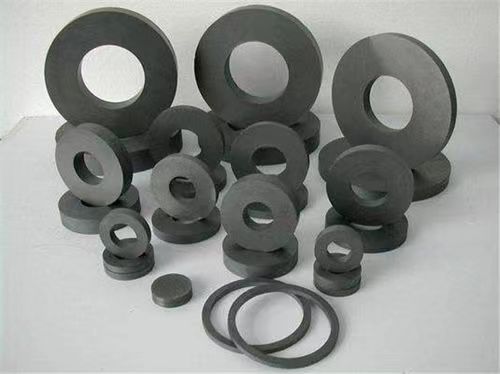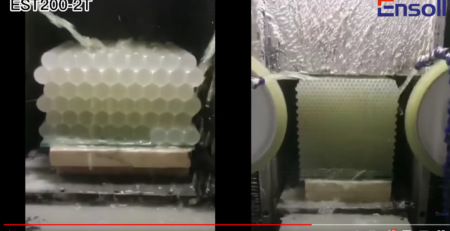Magnetic Ceramics – Ferrite
Ferrite is a composite oxide mainly composed of iron oxide and other iron or rare earth oxides. It are mostly semiconductors, and their resistivity is much higher than that of general metal magnetic materials, and they have the advantage of small eddy current loss. In the field of high frequency and microwave technology, such as radar technology, communication technology, space technology, electronic computer and so on, it has been widely used.

Classification of ferrites

Cutting of Ferrite
At present, the diamond wire loop cutting technology on the market is used in many cutting fields, such as ceramics, crystals, glass, magnetic materials, gemstones, etc. It is also suitable for ferrite cutting, with fast cutting speed and good cutting accuracy.
Ferrite materials which for new energy trams cutting by diamond wire loop saw – Ensoll
https://www.youtube.com/watch?v=xP4t6Yl-1uY
Application of Ferrite
1. Biomedicine
For example, the synthesized multifunctional zinc ferrites nanoparticles have excellent photoluminescence and ferromagnetic properties, and can be used as molecular carriers for hydrophobic and hydrophilic anticancer drugs.
2. Reaction catalysis
Due to the advantages of easy separation of magnetic catalysts, many researchers have paid extensive attention. Nickel ferrites, manganese ferrite and nickel-zinc ferrite were prepared by solid-phase calcination, which were used for the catalytic oxidation reaction of toluene. Studies have shown that the catalytic activity of pure ferrite is not high, while the catalytic activity of mixed oxide is higher. During the calcination process, the catalytic activity is significantly improved due to the strong interaction between the two oxides.
3. Electronic components
Sensors and biosensors composed of ferrites nanomaterials are used to detect analytes at varying trace levels. Meanwhile,it are commonly used in microwave devices due to their excellent low electrical conductivity and dielectric loss.
4. Storage field
It materials can be used to make magnetic recorders, which are widely used in the field of information storage. The magnetic materials used for magnetic recording are divided into two categories: magnetic writing and magnetic reading devices, and magnetic writing devices, namely magnetic recording media, whose function is to record and store information.
5. Absorbers
It absorbing materials are both magnetic and dielectric, and have good impedance matching performance. They are the most widely used absorbing materials. And the study of ferrites composites with improved properties by adding auxiliary materials to ferrites is also a current research focus.




